Smoked & barbecue meats represent one of America’s most beloved culinary traditions, transforming ordinary cuts into extraordinary dining experiences through time-honored low-and-slow cooking techniques. Whether you’re a backyard beginner or seasoned pitmaster, mastering this art requires understanding proper cut selection, equipment choices, and proven methods that consistently deliver mouthwatering results. The craft continues growing in popularity among home cooks and professional chefs who appreciate the depth of flavor that only smoking can provide. Learning these fundamentals opens doors to endless culinary possibilities.
Table of Contents
Best Meat to Smoke: Cuts, Techniques, and Pro Tips
Creating exceptional smoked & barbecue meats begins with selecting cuts that respond beautifully to low-and-slow cooking methods. The smoking process involves exposing proteins to aromatic wood smoke while maintaining temperatures between 225°F and 275°F for extended periods, allowing tough connective tissues to break down while infusing deep, complex flavors throughout the meat. Understanding these principles ensures consistently excellent results every time you fire up your smoker.
Understanding Premium Cut Selection
The finest smoked & barbecue meats typically feature higher fat content and generous marbling that prevents drying during long cooking sessions. These characteristics allow meat to remain moist while absorbing maximum smoke flavor, creating the tender, juicy results that define exceptional smoked & barbecue meats. Cuts with natural fat distribution create self-basting effects that keep meat succulent throughout extended smoking periods, which explains why certain cuts consistently produce superior results.
Tougher cuts often produce the best smoked & barbecue meats because steady, low heat gradually converts collagen into gelatin, transforming chewy textures into fork-tender masterpieces. This transformation explains why inexpensive cuts like pork shoulder and beef chuck frequently outperform premium steaks when smoking. The science behind these conversions makes previously tough cuts into some of the most prized proteins in competitive barbecue circles.
Want to dive deeper into which cuts are best for beginners versus pros? Check out our complete guide on the best meat to smoke, including expert techniques and tips.
Skill-Based Cut Recommendations
Beginner-Friendly Options:
Pork Shoulder (Boston Butt): The most forgiving choice for learning smoked & barbecue meats fundamentals
Chicken Thighs: Perfect for practicing temperature control while creating delicious smoked & barbecue meats
Pork Ribs: Predictable cooking times with clear visual doneness indicators for consistent outcomes
Intermediate Challenges:
Beef Short Ribs: Rich, beefy flavors that showcase smoked & barbecue meats potential
Whole Chicken: Requires balancing skin crispness with interior doneness for perfect results
Pork Belly: High fat content creates incredibly flavorful smoked & barbecue meats
Advanced Projects:
Whole Beef Brisket: The ultimate smoked & barbecue meats challenge requiring 12-16 hours
Whole Turkey: Complex cooking requiring expertise to achieve perfection
Lamb Leg: Understanding gamey flavors and proper seasoning balance for exceptional smoked & barbecue meats
Professional Preparation Methods
Successful smoked & barbecue meats depend heavily on proper preparation before smoking begins. Trimming excess fat ensures even cooking while preventing flare-ups that can create bitter flavors in your finished product. Strategic scoring allows seasonings to penetrate deeper into proteins, maximizing flavor development during the smoking process and creating more flavorful results.
Many pitmasters recommend dry brining 24-48 hours before smoking, which initially draws out moisture before proteins reabsorb it along with salt, creating more concentrated flavors in the final product. This technique particularly benefits leaner cuts that lack natural fat marbling, helping them achieve the succulence associated with premium smoked & barbecue meats.
Temperature monitoring proves essential for consistently excellent results. Invest in reliable dual-probe thermometers that simultaneously track smoker temperature and internal meat temperature, eliminating guesswork while preventing overcooking expensive cuts. Proper temperature control separates amateur attempts from professional-quality smoked & barbecue meats.
Smoked Meats: Tools, Techniques, and Tips for Perfect Flavor
Producing restaurant-quality smoked & barbecue meats requires understanding equipment options, mastering fundamental techniques, and avoiding common pitfalls that plague beginning smokers. The right combination of tools and methods transforms quality ingredients into memorable meals.
Essential Equipment Selection
Smoker Categories: Different smoker styles offer unique advantages for creating exceptional smoked & barbecue meats. Offset smokers provide authentic wood-fired flavors but demand constant attention for temperature consistency. Pellet grills deliver convenience through automated systems while maintaining excellent quality. Electric smokers offer precision control perfect for beginners, while kamado-style cookers provide exceptional heat retention and fuel efficiency.
Critical Accessories: High-quality thermometers rank as the most important accessory for successful smoked & barbecue meats. Dual-probe models monitor ambient smoker temperature while tracking internal meat temperature simultaneously, ensuring consistent results. Water pans maintain moisture levels during extended sessions, particularly important for leaner cuts.
Wood selection dramatically impacts final flavors. Hickory provides bold, bacon-like notes perfect for pork, while apple wood creates mild, sweet smoke ideal for poultry. Mesquite delivers intense flavor suited for beef, and cherry wood adds beautiful color along with subtle fruity notes.
To master your BBQ setup, explore our essential breakdown of smoked meat tools, techniques, and pro tips, perfect for any skill level.
Advanced Smoking Techniques
The “Texas Crutch” method involves wrapping partially cooked proteins in foil or butcher paper during smoking sessions. This technique accelerates cooking while preventing surface drying, particularly useful for brisket and pork shoulder. Butcher paper allows controlled moisture evaporation while maintaining bark development, while foil creates braising environments.
Managing airflow controls both temperature and smoke density in smoked & barbecue meats preparation. Insufficient airflow creates stagnant, bitter smoke, while excessive airflow burns fuel too quickly. Proper smoke appears thin and blue, indicating complete combustion that enhances rather than overwhelms the final product.
Temperature stalls occur when evaporative cooling balances heat input, causing internal temperatures to plateau for hours during smoked & barbecue meats preparation. Understanding this phenomenon prevents panic and premature temperature increases that ruin long smoking sessions.
Common Problem Solutions
Dry results typically stem from overcooking or insufficient fat content. Combat dryness by wrapping meats during cooking, maintaining water pans, and carefully monitoring internal temperatures. Premium cuts contain natural fat distribution, but leaner options benefit from barding or injection with flavorful liquids.
Bitter flavors develop from over-smoking or excessive wood usage during smoked & barbecue meats preparation. Start with minimal wood additions and increase gradually based on results. Clean-burning fires produce superior flavors compared to smoldering wood piles that create acrid tastes.
Cooking Packaged Smoked Meat: The Ultimate Guide
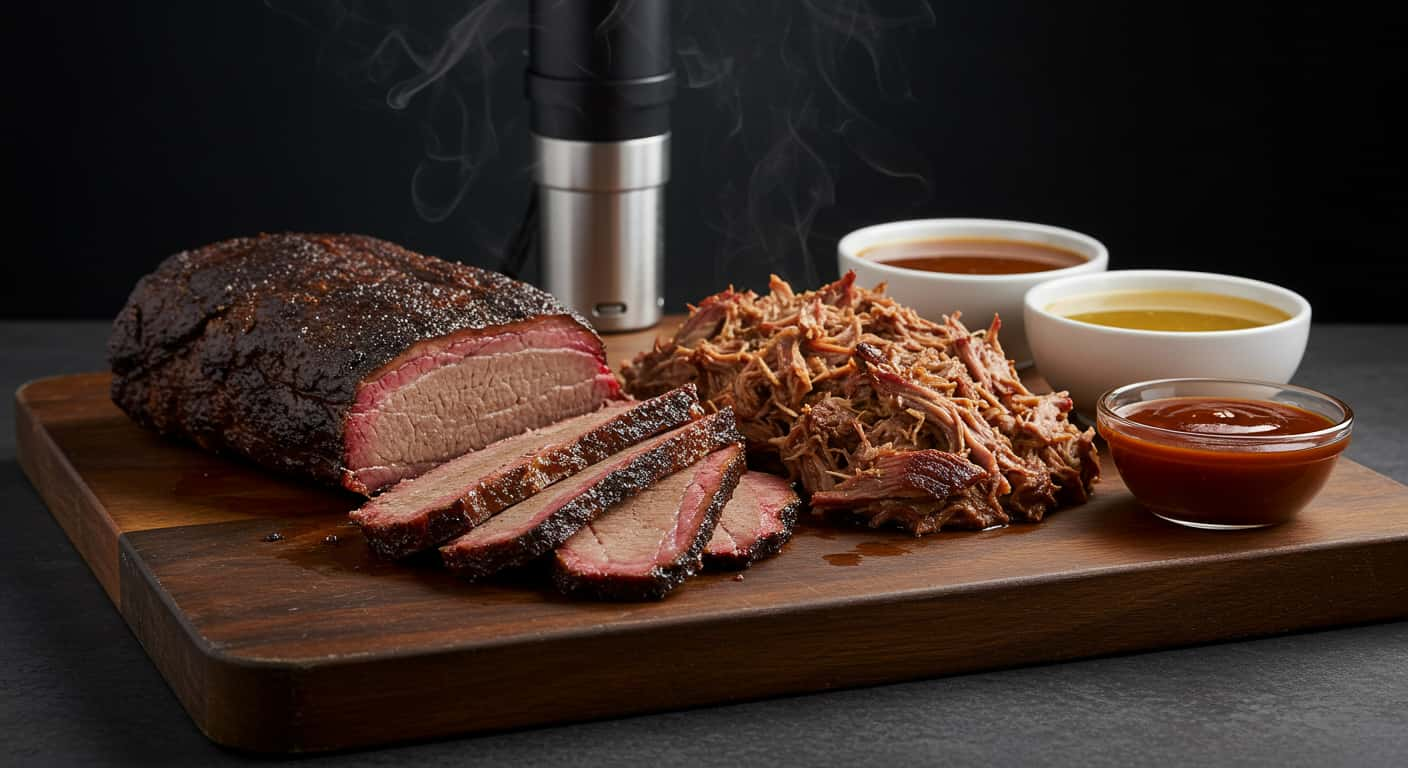
Pre-smoked and packaged products offer convenience while maintaining much of the distinctive flavors associated with traditional smoked & barbecue meats. Understanding proper reheating and enhancement techniques transforms store-bought options into restaurant-quality meals that rival fresh preparations.
Quality Product Selection
Premium packaged products display firm textures without excessive moisture or slimy surfaces. Natural casings on sausages should remain intact, while vacuum-sealed brisket or pulled pork should appear moist without sitting in excess liquid. Check ingredient lists for minimal additives and natural wood smoking rather than artificial flavoring.
Optimal Reheating Methods
Low-temperature reheating preserves texture and prevents moisture loss in packaged smoked & barbecue meats. Oven reheating at 275°F wrapped in foil with small amounts of liquid works excellently for large cuts. Sous vide methods provide precise temperature control, ensuring even heating without overcooking edges.
Steam reheating maintains moisture better than microwaving for quick smoked & barbecue meats preparation. Place products in steamer baskets over simmering liquid, covering until heated through while preserving original textures.
Cooking pre-smoked meat doesn’t have to mean dry or bland, learn how to reheat and reinvent it with our ultimate guide to cooking packaged smoked meats.
Enhancement Techniques
Adding fresh smoke during reheating creates hybrid flavors combining convenience with authentic smoked & barbecue meats elements. Place pre-smoked products on grills with soaked wood chips for 15-30 minutes while reheating, refreshing smoke flavors.
Creative applications expand packaged product versatility. Chop smoked brisket for breakfast hash, incorporate smoked chicken into salads, or use smoked sausage in pasta dishes and soups for quick, flavorful meals.
Meats to Smoke in 3 Hours for Delicious Flavor
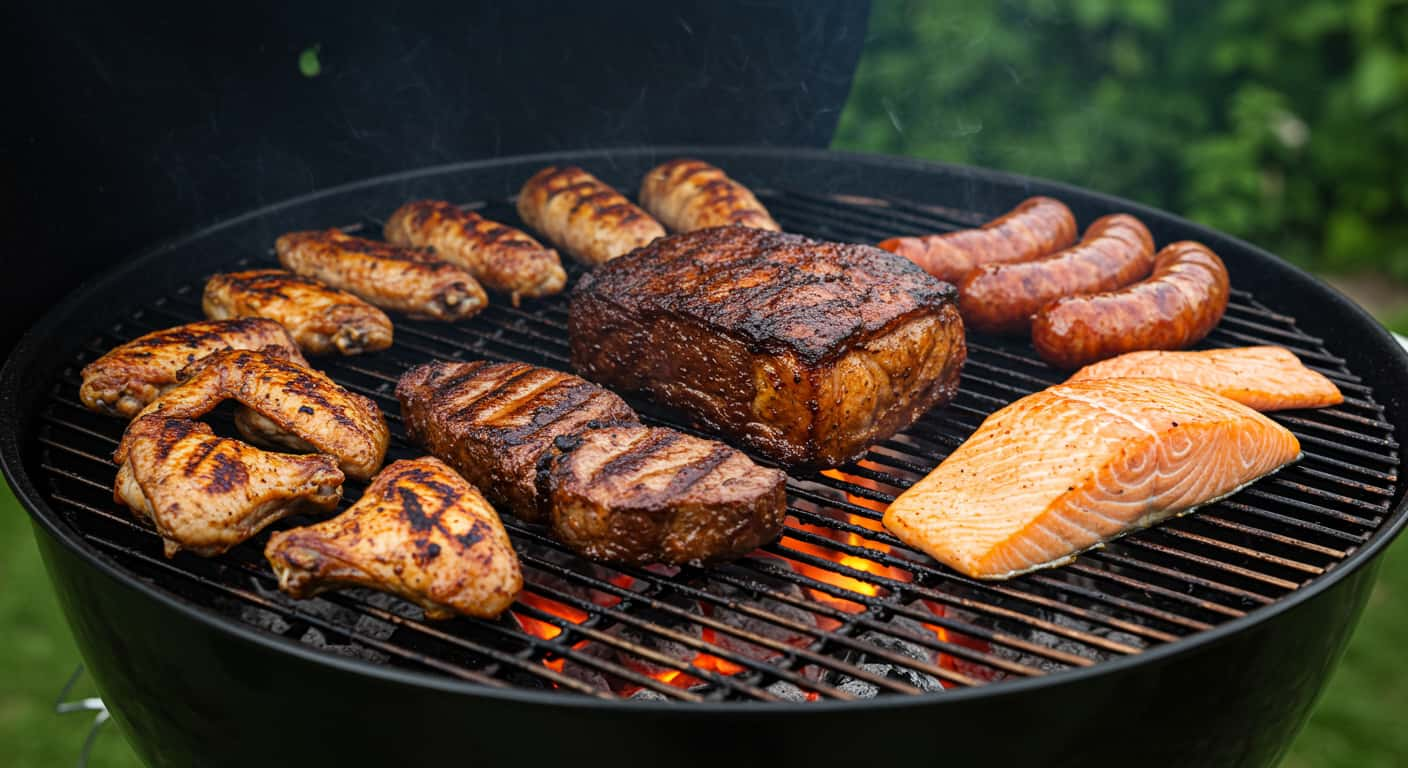
Time constraints shouldn’t eliminate smoked & barbecue meats possibilities from busy schedules. Numerous cuts deliver exceptional flavors within three-hour windows, perfect for weeknight dinners or last-minute entertaining while maintaining quality associated with traditional methods.
Quick-Smoking Champions
Chicken Pieces create excellent results in 90 minutes to 2.5 hours depending on size. Thighs and drumsticks contain sufficient fat to remain juicy during smoking, while wings cook even faster. Split chicken breasts require careful temperature monitoring to prevent drying.
Pork Tenderloin represents ideal quick smoking for busy schedules. These lean cuts absorb smoke rapidly while cooking in 45-90 minutes, though brining beforehand prevents dryness from naturally low fat content.
Fish Fillets smoke quickly while developing incredible flavors characteristic of quality smoked & barbecue meats. Salmon, trout, and other fatty fish work particularly well, requiring only 20-45 minutes depending on thickness.
Short on time? Discover flavorful meats you can smoke in 3 hours or less, perfect for quick BBQ wins without sacrificing taste.
Optimizing Quick Sessions
Higher smoking temperatures between 275°F and 325°F accelerate cooking while still allowing smoke penetration in quick smoked & barbecue meats preparation. These elevated temperatures work well for smaller cuts that don’t require long collagen breakdown periods.
Fruit woods like apple and cherry provide excellent flavor development during shorter sessions. Their milder profiles won’t overwhelm quick-cooking proteins, while heavier woods might create overpowering results.
What Compliments Smoked Meat: Perfect Pairings
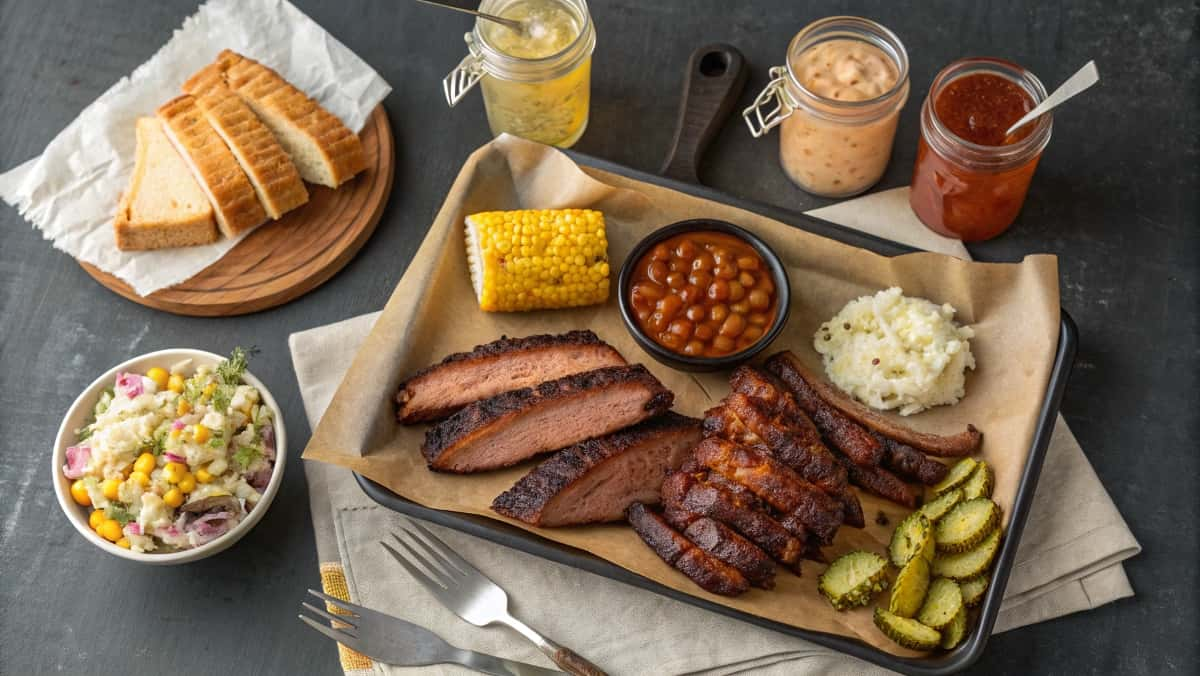
Outstanding smoked & barbecue meats deserve equally thoughtful accompaniments that highlight smoking efforts while providing contrasting flavors and textures. The right sides, sauces, and beverages create balanced meals that showcase your efforts without overwhelming their distinctive characteristics.
Traditional Side Dishes
Coleslaw provides refreshing contrast to rich smoked & barbecue meats. Vinegar-based versions cut through fatty proteins, while creamy coleslaws offer cooling elements against spicy barbecue seasonings. The crisp texture contrasts beautifully with tender textures.
Cornbread serves as the perfect vehicle for soaking up juices and sauces from smoked & barbecue meats. Sweet versions complement spicy rubs, while savory cornbreads enhanced with jalapeños create more complex flavor profiles that enhance the dining experience.
Baked Beans traditionally accompany smoked & barbecue meats, with their sweet and savory flavors complementing smoked proteins perfectly. Slow-cooked beans develop deep flavors that don’t compete with smoked proteins while providing satisfying substance.
From tangy slaws to bold bourbons, learn what sides, sauces, and drinks pair best with smoked meats to complete your BBQ feast.
Regional Sauce Traditions
Different regional barbecue styles pair specific sauces with particular smoked & barbecue meats. Carolina-style vinegar sauces cut through fatty pork with bright acidity, while Kansas City-style molasses-based sauces complement beef with sweet richness that enhances flavors.
Beverage Selections
Beer pairings work exceptionally well with smoked & barbecue meats. Hoppy IPAs cut through fatty brisket, while malty brown ales complement pork flavors. Wine selections should focus on bold reds that can stand up to intense smoke flavors.
Smoked Chicken Thighs Recipe
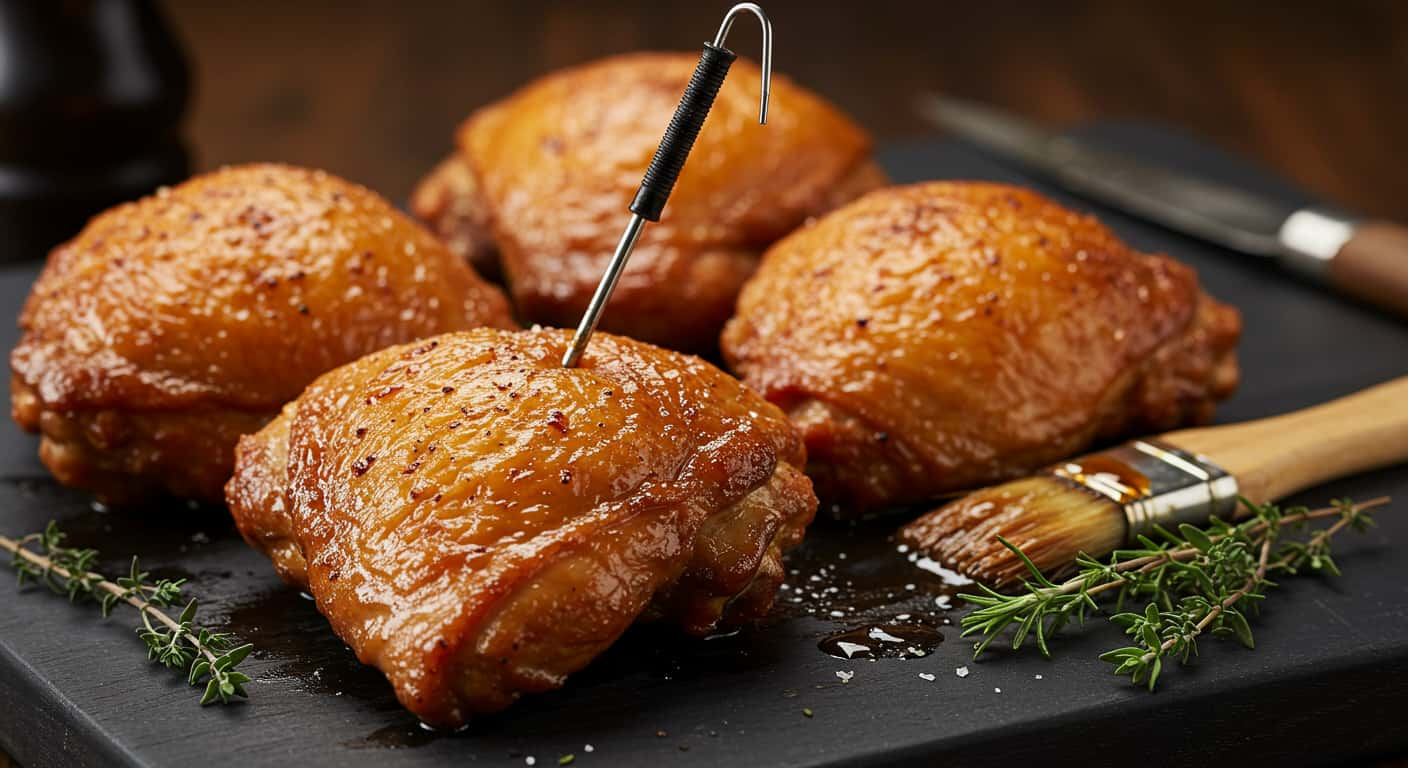
Chicken thighs represent ideal candidates for beginners learning smoked & barbecue meats fundamentals, offering forgiving fat content while developing exceptional flavors quickly. This recipe delivers restaurant-quality results with minimal complexity.
Preparation and Seasoning
Choose bone-in, skin-on thighs for maximum flavor and moisture retention when preparing smoked & barbecue meats. Remove excess skin and fat, but leave enough to protect meat during smoking. Pat thighs completely dry before seasoning to ensure proper rub adherence.
Looking for a juicy, crowd-pleasing dish? Try our foolproof smoked chicken thighs recipe for crispy skin and deep smoky flavor.
Signature Dry Rub
Create balanced flavors for exceptional smoked & barbecue meats with this proven combination:
- 2 tablespoons brown sugar
- 1 tablespoon paprika
- 1 teaspoon garlic powder
- 1 teaspoon onion powder
- 1 teaspoon black pepper
- 1 teaspoon salt
- 1/2 teaspoon cayenne pepper
Smoking Process
Preheat smoker to 275°F using apple or hickory wood for smoked & barbecue meats preparation. Position thighs skin-side up on cooking grates, ensuring adequate spacing for air circulation that promotes even cooking.
Monitor internal temperature using probe thermometers, targeting 175°F in thickest portions for properly cooked smoked & barbecue meats. This typically requires 90 minutes to 2 hours depending on thigh size.
Grilled Salmon with Herbs: The Ultimate Guide
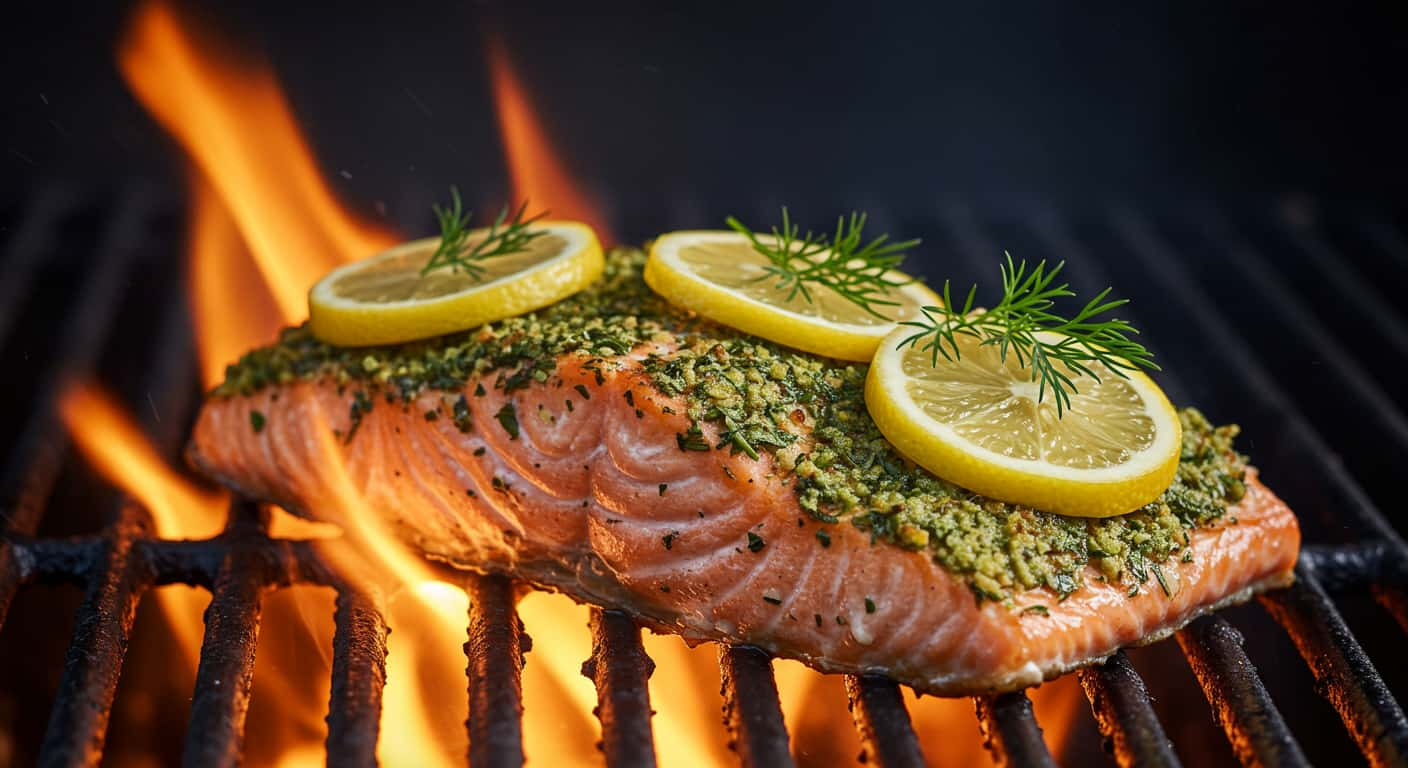
Salmon’s rich, oily flesh makes it among the finest options for seafood smoked & barbecue meats enthusiasts. Its natural fat content prevents drying while absorbing smoke flavors beautifully, creating restaurant-quality results that demonstrate the versatility of smoked & barbecue meats beyond traditional cuts.
Premium Salmon Selection
Fresh salmon fillets should display bright color without browning edges for quality smoked & barbecue meats preparation. Skin-on fillets work best, as skin protects delicate flesh while adding flavor during smoking sessions.
Wild-caught varieties offer superior flavor and texture compared to farm-raised options for smoking applications. King salmon provides richest fat content, while sockeye offers intense flavor with firm texture ideal for smoking.
For a lighter BBQ option, explore our grilled salmon with herbs guide, perfect for summer evenings or clean eating.
Herb Combinations
Fresh herb mixtures create aromatic crusts that complement salmon’s natural flavors in smoked & barbecue meats preparation:
Classic Mediterranean:
- Fresh dill and lemon zest
- Garlic and olive oil
- Sea salt and black pepper
Smoking Technique
Prepare cedar planks by soaking 2-4 hours before use for enhanced smoked & barbecue meats flavors. Position planks over indirect heat, allowing gradual heating that prevents burning while adding aromatic cedar notes.
Smoke salmon at 225°F until internal temperature reaches 145°F for perfectly cooked smoked & barbecue meats, typically 25-45 minutes depending on thickness. Fish should flake easily when tested while maintaining moist centers.
Conclusion
Mastering smoked & barbecue meats requires patience, practice, and understanding of fundamental principles that govern successful low-and-slow cooking. Whether preparing quick weeknight dinners or all-day smoking sessions, success comes from matching proper techniques to specific cuts while maintaining consistent conditions that allow smoked & barbecue meats to develop their characteristic flavors and textures.
The journey from novice to accomplished pitmaster involves countless hours experimenting with different approaches, gradually building knowledge that elevates backyard barbecue into culinary artistry. Start with forgiving cuts, master fundamental techniques, then advance to challenging projects that showcase the full potential of smoked & barbecue meats.
Remember that exceptional smoked & barbecue meats combine scientific precision with creative flair, requiring technical knowledge balanced with intuitive understanding of how different cuts respond to smoke and heat. Through dedicated practice and attention to detail, anyone can create memorable meals that demonstrate why smoked & barbecue meats continue captivating food enthusiasts worldwide.

